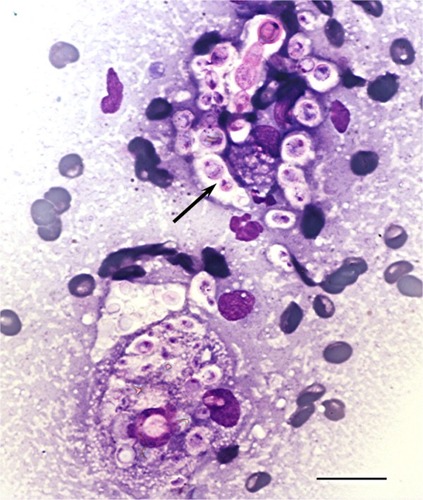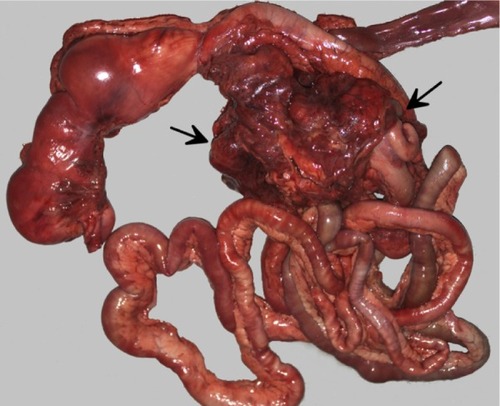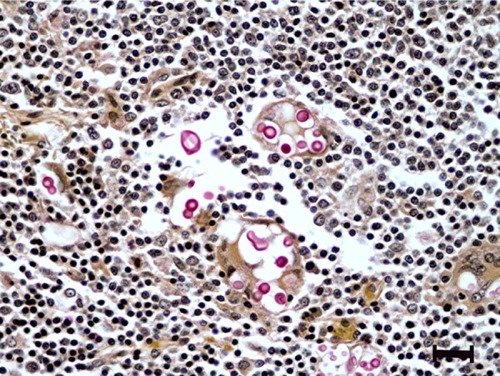Figures & data
Figure 1 Fine-needle aspirate cytology of a cranial abdominal mass displaying numerous extracellular and intrahistiocytic Cryptococcus spp. yeasts with prominent nonstaining capsules, narrow-based budding (arrow), and occasional chains of organisms.


